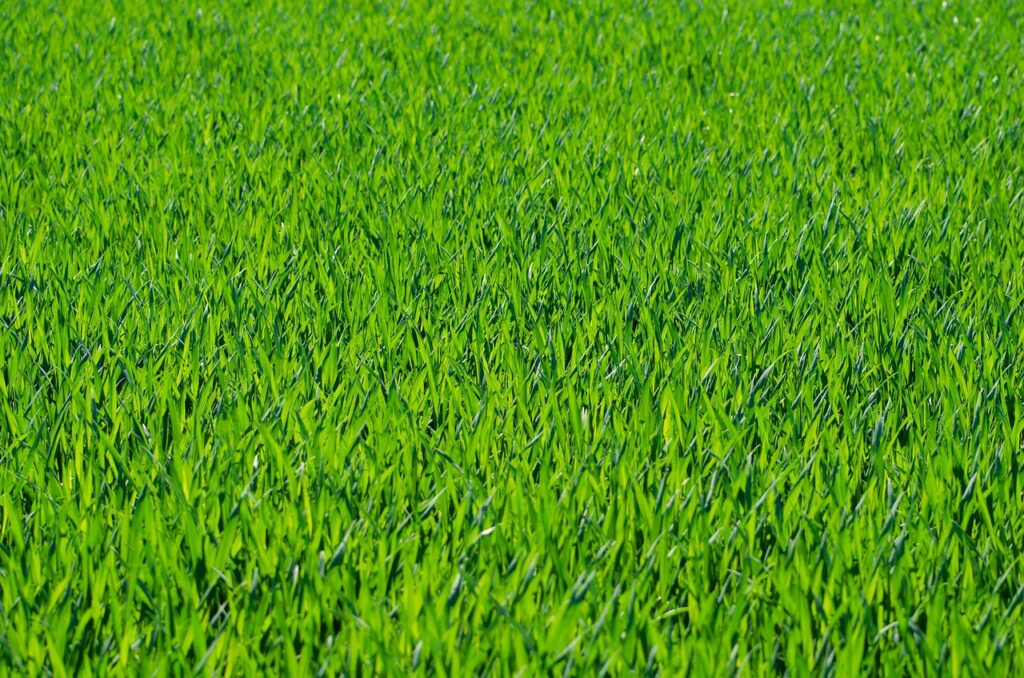Do you think green is a splendid color? Many do. It has been said that green is refreshing to the eyes and relaxes the mind. No wonder homeowners like you want to surround property with green grass.
There is one problem with grass though: the endless need to maintain it. Fertilizing, watering, and mowing it takes too much time and effort.
Homeowners are always looking for ways to improve the look and functionality of their outdoor spaces without all these hassles. Artificial grass has grown in popularity as a practical alternative to natural lawns. Its lush appearance, minimal maintenance, and year-round vibrancy attract property owners who want a consistently beautiful yard without the burdens of mowing, watering, or fertilizing. This synthetic solution offers a uniform and manicured look that elevates the curb appeal of any home.
Artificial grass replicates the texture and color of natural turf through advancements in manufacturing and materials. It provides the same visual charm without seasonal discoloration or patchy growth. The realistic design and natural feel make it hard to distinguish from traditional grass. Its instant transformation effect on the landscape creates a more inviting and polished exterior.
Low Maintenance and High Efficiency
Artificial grass reduces the time and money spent on maintenance. Traditional lawns require routine mowing, edging, seeding, fertilizing, and pest control. These tasks demand both physical effort and financial resources. Artificial grass, in contrast, needs only occasional brushing to remove debris and occasional rinsing to keep it clean. There is no need for irrigation systems, reducing water usage significantly.
The environmental impact is also minimized. Homeowners no longer use gas-powered lawn equipment, which reduces emissions. The absence of herbicides and pesticides makes artificial grass safer for children and pets. It also supports efforts to create eco-friendly and sustainable homes. The decrease in chemical runoff helps protect local waterways and promotes healthier ecosystems.
Enhancing Outdoor Living Spaces
Artificial grass turns outdoor areas into functional and aesthetic extensions of the home. Patios, rooftops, balconies, and poolside zones benefit from the soft texture and consistent green appearance. These areas become suitable for hosting guests, lounging, and recreational activities. Artificial grass withstands heavy foot traffic without losing its shape or color.
The surface remains clean and dry faster than natural grass, thanks to its efficient drainage systems. It creates a mess-free environment that encourages more outdoor use. Families with children and pets find it especially helpful because it reduces mud and allergens. A clean and comfortable outdoor setting encourages more frequent interaction with nature while still maintaining a neat appearance.
All Season Visual Appeal
Natural grass often struggles with seasonal changes. Extreme heat, cold, or drought can turn a vibrant lawn brown and patchy. Artificial grass maintains its color and texture throughout the year regardless of climate conditions. This ensures the yard remains presentable in all seasons, enhancing the property’s aesthetic appeal.
Consistent greenery contributes to a more harmonious and elegant home exterior. It also eliminates the stress of lawn recovery during spring or fall. The uniform look provides visual continuity that complements architectural features and landscaping elements. Neighbors and visitors will notice the fresh and tidy look, enhancing your home’s first impression.
Boosting Property Value
An attractive and well-maintained yard adds to the value of a property. Prospective buyers often evaluate curb appeal as part of their decision making process. Artificial grass demonstrates thoughtful investment in property care. It signals that the homeowner values aesthetics, sustainability, and practicality.
The promise of reduced maintenance costs appeals to buyers who may not have the time or interest in lawn upkeep. The ability to enjoy a pristine lawn without labor-intensive care makes the home more desirable. Real estate professionals agree that upgrades that enhance visual appeal while lowering long-term maintenance often increase a property’s market value.
Supporting Water Conservation Efforts
Water conservation has become a pressing concern in many parts of the world. Municipalities are encouraging homeowners to reduce outdoor water use through incentives and regulations. Artificial grass helps meet these goals by eliminating the need for irrigation.
In regions prone to drought, artificial grass ensures the landscape remains green without burdening limited water supplies. This aligns with modern sustainable practices and helps communities manage resources more effectively. Homeowners benefit from lower utility bills while supporting broader environmental objectives.
Innovative Design Possibilities
Artificial grass provides creative freedom in landscaping design. It can be used in unconventional spaces such as driveways, vertical gardens, and decorative borders. It pairs well with stone pathways, wooden decks, and flower beds to create a balanced and artistic outdoor layout. The flexibility in cutting and shaping allows designers to customize installations according to unique home layouts.
It also works well for indoor applications in sunrooms, play areas, and home gyms. These installations provide a green and refreshing feel indoors. The consistent look across various zones contributes to the overall harmony of home aesthetics. Designers and architects often integrate artificial grass into modern layouts to achieve a seamless blend of form and function.
Durability and Long Term Performance
Artificial grass is engineered to last. Modern variants are UV resistant, ensuring they do not fade under prolonged sun exposure. They are also resistant to tearing, flattening, and general wear and tear. This makes them suitable for both residential and commercial settings.
Long lifespan reduces the frequency of replacements, making artificial grass a cost effective investment. When properly installed and maintained, it can last for more than a decade. Homeowners appreciate its resilience and ability to remain visually appealing under varying conditions. This durability adds to the convenience and financial advantages of artificial grass.
Improved Safety and Comfort
Artificial grass is designed with safety in mind. The surface is even and cushioned, reducing the risk of injuries during play or falls. It often includes infill materials that provide additional shock absorption. This makes it suitable for families with young children and elderly members.
It does not attract pests such as ticks or fleas, contributing to a healthier environment. Its hypoallergenic nature also benefits individuals who suffer from grass pollen allergies. Artificial grass creates a space that is both visually pleasant and physically safe, enhancing the overall comfort of the home.
Sustainable Materials and Recycling Options
Many artificial grass products are now made with sustainable or recycled materials. This supports a circular economy and reduces the carbon footprint associated with production. At the end of its lifecycle, artificial grass can be recycled into new products, further reducing waste.
The industry continues to innovate, producing greener options that align with environmental goals. Consumers can choose products certified for low chemical emissions and sustainability. This commitment to eco conscious living supports responsible home improvement choices. Homeowners can enjoy modern convenience without compromising on ethical and environmental values.
Conclusion
Artificial grass offers more than just a beautiful lawn. It enhances the aesthetic appeal of the home while improving efficiency, sustainability, and comfort. Its ability to deliver consistent visual charm, reduce maintenance, conserve water, and provide safe and durable outdoor spaces makes it a valuable addition to any property. Homeowners seeking a blend of style and practicality will find artificial grass to be a smart and effective solution for transforming their living environments.

